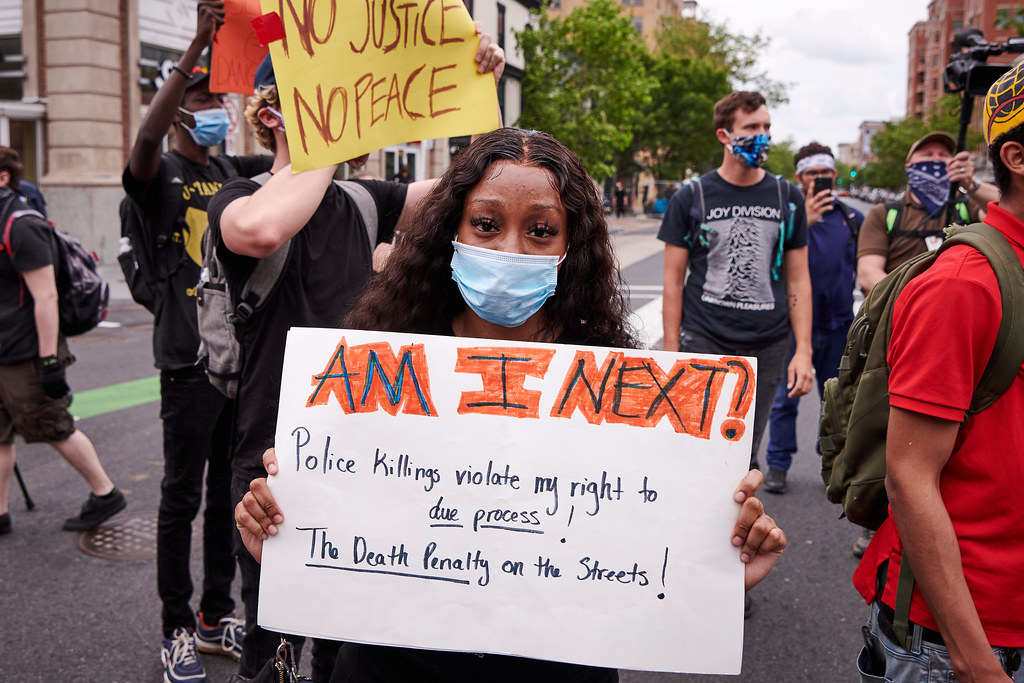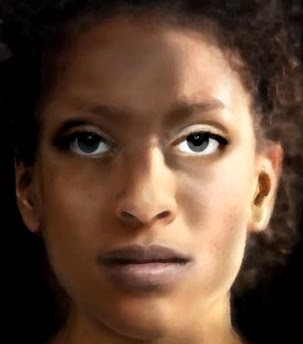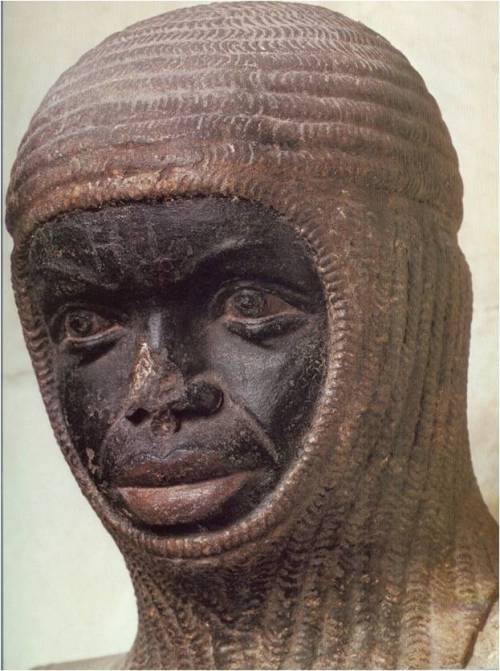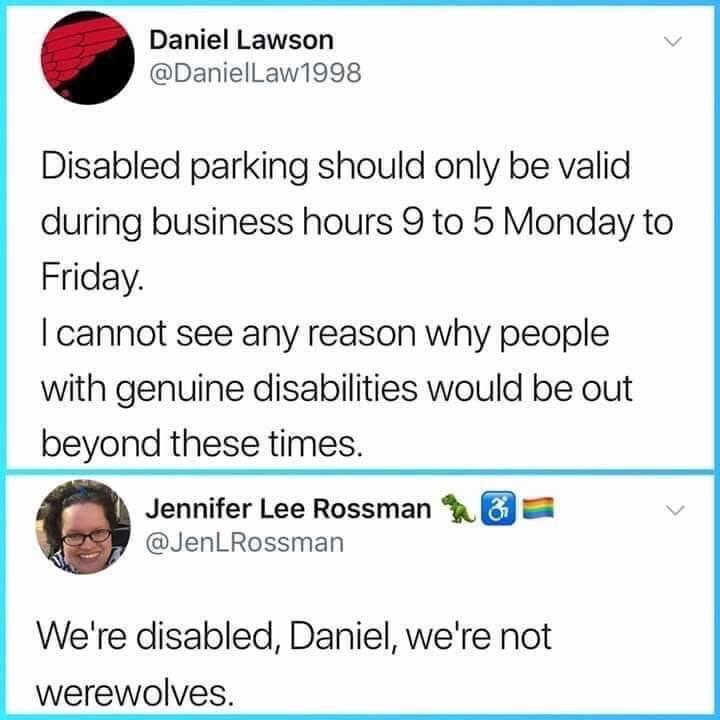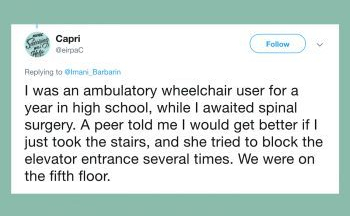It’s Disability Awareness Month, and in the middle of this pandemic, at the 30th anniversary of the ADA, there’s never been a more important time to center people with disabilities. Unfortunately, the national discussion around Covid-19 has been marginalizing, rather than centering, PwDs.

All the images in this post promote independent mask makers. This cute design has a window, making it easier for deaf and hard-of-hearing people to understand you! The maker is Rebirth Garments on Etsy. (Pictured: A smiling person with very short black hair, wearing colorful garments and a face mask with a plastic window through which their mouth can be seen.)
We are not disposable. Although little is still known for certain about Covid-19, people with chronic illnesses and certain disabilities appear to be at greater risk. “It’s mostly just old people and people with other conditions,” is tossed out by people looking to shut down concerns. Some prominent conservatives have even gone as far as to say that the elderly and/or people with disabilities should be sacrificed to “save” the US economy.
Perhaps the worst aspect of this is around pediatric cases. In news stories about the children who have died, “[Name of child victim] had underlying conditions” is featured prominently whenever it’s applicable. I’ve even seen it on a line by itself. “Reduce your concern,” it seems to say, “This child was disabled, so it’s not as bad.”
PwDs and families of PwDs are facing the very real possibility that our access to life-saving medical care will be impacted by ableism. In areas of the country overwhelmed by serious cases of Covid-19, hospitals face the unpleasant task of triage, and while disability is not supposed to be a concern, ableism– like racism, like sexism, like transphobia, like fatphobia, like every other kind of bigotry– is often expressed in implicit bias. We believe we have “good reasons” for a decision that, when more closely examined, are actually the result of bias. When there’s one ventilator left in the hospital and three patients who need that ventilator, “quality of life” and “best chance for a full recovery” can knock a person with a disability out of consideration.
Both the widespread sentiment that the danger of reopening schools and businesses is overstated because most of the people who will die have pre-existing conditions and the implicit — and explicit— bias at work in triage reflect systemic ableism. Our lives are not just considered less important than the lives of the able-bodied, our lives are considered less important than the economy. Which means, at its heart, that our lives are less important than protecting the wealth of billionaires. It’s not about “getting people back to work,” as the US has ample resources to temporarily provide income to people who must stay home and childcare for people who cannot. We just choose not to because it would require raising taxes on millionaires and billionaires.
The lives of PwDs are considered a more acceptable sacrifice than 1% of the wealth of billionaires.
Our lives are as valuable and precious as the lives of able-bodied people. We will not be sacrificed so you can “reopen the economy” and hold in-person classes, football games, or two-for-one jello shot nights at McCovid’s. You cannot have our children to sacrifice on the altar of capitalism.

The MVerse is making gorgeous silk masks. (Pictured: Five colorful, patterned face masks arranged in a fan pattern.)
The other group Americans seem more than willing to sacrifice for the economy are people of color.
Two of the most significant conditions correlated with serious Covid-19 complications are asthma and cardiovascular issues, both of which are over-represented in BIPOC communities, especially Black and Indigenous communities. The impact of systemic racism on health has been studied for years, yet there is still widespread white resistance to the fact that racism is a public health crisis. White health– like able-bodied health– is considered more valuable and important.
Anything that primarily impacts BIPOC or PwDs is not a “crisis”; it’s a “special interest.”
Too many able-bodied white Americans do not consider disabled lives or Black lives important enough to protect. We were all in favor of social distancing and shelter-in-place until it became clear that the higher risk was borne by people with disabilities and people of color. Immediately, conservatives peeled off and became stridently insistent that the pandemic was a hoax, masks were “mind control devices,” and every healthcare provider and scientist around the world were somehow lying for “profit.” Suddenly allowing people to die to strengthen the economy was an acceptable sacrifice.
People with disabilities:
If you are a BIPOC PwD, you face all of these same barriers at twice the intensity.
BIPOC, especially Black and Native people, are much more likely to live in poverty due to generations of aggressive economic disenfranchisement, making it more difficult to access medical care. When they do access medical care, they face enormous bias in the healthcare system. Both Black and Latinx people are less likely to have their pain properly treated in emergency departments and are less likely to be believed when self-reporting symptoms.
Black people in particular face shocking levels of bias and discrimination while seeking medical care.
- Almost half of medical students surveyed in 2016 reported believing that Black people do not feel pain as acutely as white people, have thicker skin than white people, and have fewer nerve endings than white people.
- In 2015, another study found that Black children with appendicitis were far less likely to be given pain relief in the Emergency Department than white children.
- In 2017, the publisher Pearson was forced to pull a popular nursing textbook when a page teaching racist stereotypes was posted online. The text claimed, “Blacks believe in prayer and the laying on of hands to heal pain” and “report higher pain intensity than other cultures.”
- While overall maternity mortality rates in the US are higher than any other developed nation, Black women are three times more likely to die from childbirth complications than white women.
BIPOC people with disabilities, especially women, face systemic barriers to healthcare that make their ability to survive any health crisis, Covid-19 or otherwise, extremely difficult.

This little cutie is wearing a mask from Conscious Change, a Black-owned Etsy shop. (Pictured: Adorable Black girl with pigtails wears a white t-shirt that says “Black Girl” in black cursive and a black face mask that says “I Matter” in white below a white heart with an black, upraised fist.)
Being a BIPOC PwD is an especially potent intersectional identity because white supremacy measures the worth of BIPOC lives by how useful they are to the white supremacist narrative: Are you making money for white people? Are you appropriately grateful to your white benefactors for the opportunities you’ve been “given”? Do you refuse to participate in protests against racism, including non-violent protests like taking a knee? Are you “happy” or “angry” and “rude”?
Nowhere is this more robust than in the white understanding of Black people. White people see the existence of Black people as being about white people. Every Black event, movement, slogan, or group is criticized bitterly if it does not center whiteness. If you doubt this, remember that they can’t even say “our lives matter” without white people angrily denouncing them as “racists” and responding with “white lives matter,” “white lives are better,” “only white lives matter” and support for white supremacy.
The angry and even violent white backlash to Black people publicly stating that their lives matter, combined with the widespread ableist belief that the lives of people with disabilities are less valuable, means Black PwDs face some of the most virulent and insidious bigotry in the country at the very moment when the nation is hotly debating whether we should sacrifice American lives to reopen schools and businesses.

The Black-owned Etsy store HipFruit has a wide variety of masks, including both floral and BLM designs. (Pictured: A Black woman with long, straight hair and an off-the-shoulder top with navy and white stripes is wearing a face mask featuring white flowers on a black background.)
Government Apathy. This pandemic has highlighted the brutal impact of systemic ableism and systemic racism. Yet, as more and more people suffer, die, or survive with long-lasting medical complications, the government is less and less interested in providing relief. The Trump Administration, aided in large part by their ghoulish GOP allies in Congress, is insistent that unemployment and disability should be slashed, funding for Covid testing and tracing should be eliminated, and the CDC budget reduced in addition to pulling out of the World Health Organization. The press heaps praise upon Trump for wearing a mask in public and for making a speech without a single dangerous lie while his inaction and incompetence have caused the deaths of over 140,000 Americans (and counting).
The pandemic has put a spotlight on some pre-existing inequities. But what we choose to do about those inequities is the critical question. Thus far, we seem content with nothing better than comforting able-bodied white people with narratives like “People of color are at higher risk” and “People with underlying conditions are at higher risk” while half the nation insists that our deaths are irrelevant if the economy rebounds.
When you say, “Black Lives Matter,” please remember that some of those Black lives are disabled lives. When you say, “We should reopen schools and businesses because most of the people who die have underlying conditions,” remember that what you’re really saying is “the deaths of PwDs, especially the BIPOC PwDs at the highest risk, are an acceptable sacrifice to maintain billionaire wealth, since we can’t expect them to pay higher taxes for a few years.”
In a nation where months of conservative propaganda has resulted in 31% of people refusing to wear a mask regularly to protect others, , it’s impossible to predict just how deadly this pandemic will get in the US before we have a vaccine– which anywhere between 27% and 50% of Americans say they will refuse, thanks again to propaganda, this time on the standard sources for antivax hooey on the fringe left as well as the right.
There are many things in life that are “risky,” and “acceptable risks” are part of life. In this case, however, we’re not talking about “risk.” We know this virus is deadly; we know a certain percentage of people will die or suffer long-term debilitating consequences. In this case, “acceptable risk” means “it is acceptable to me that these people will die.”
We refuse to be your “acceptable risk.” Allies, accomplices, loved ones: stand with us. And we all need to remember that BIPOC PwDs are bearing the brunt of every aspect of this crisis.
Want more? Become a Bitter Gertrude patron & get access to Bitter Gertrude Book Club, a bimonthly post with reading recommendations about BG posts, current events, and writers to keep on your radar.










